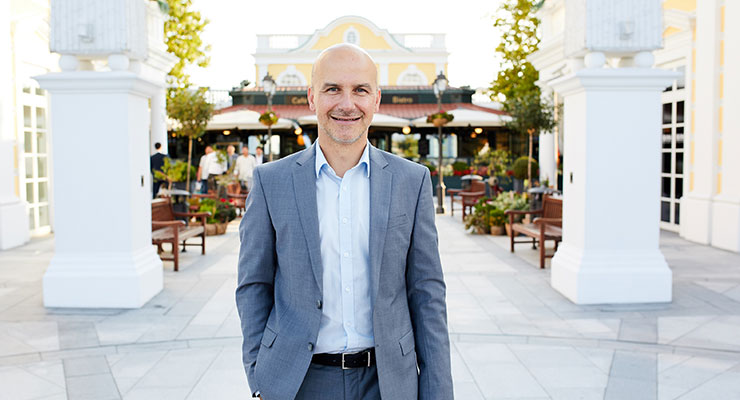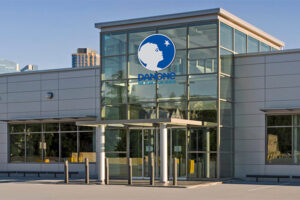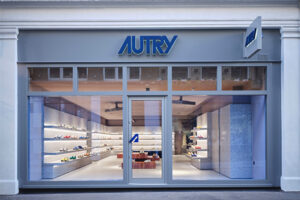ACROSS: In 2023, the Parndorf Designer Outlet will celebrate its 25th birthday. The location is considered a success story on the European outlet scene. What were the beginnings like?
Mario Schwann: In 1998, McArthurGlen Designer Outlet Parndorf opened as the first designer outlet in the German-speaking region. Back then, it all started on a greenfield site. When we look at the site today, we see the outlet embedded in an entire retail infrastructure, including local suppliers, hotels, and entertainment facilities. Twenty-five years ago, we started with 40 stores, a sparse food court with two cafés, and one million visitors in the first year. This year, around 6.4 million customers are forecast to visit our 160 stores on a total of 37,000 sq m of GLA, which includes new and established food outlets on 2,000 sq m of foodcourt space. There was a total of five construction phases that brought us to this point. So, we have reason to be proud of this development.
The Developement over time
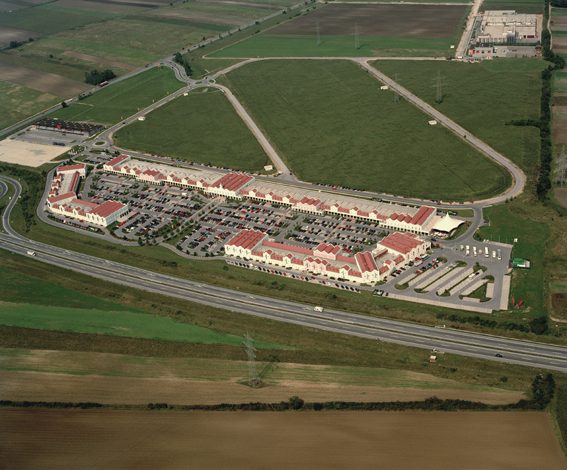
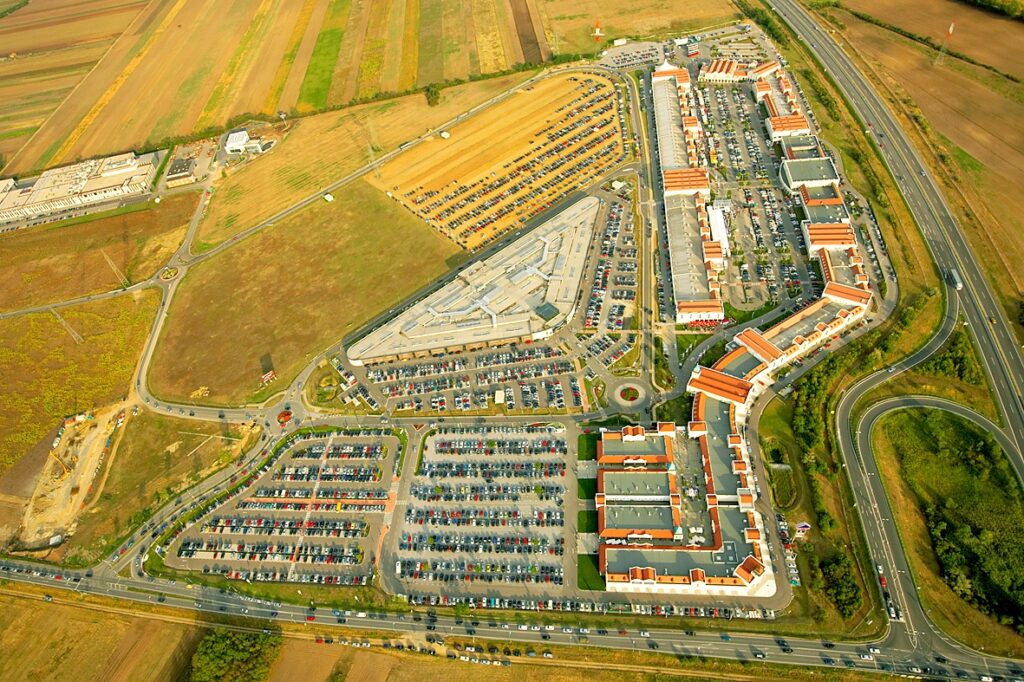
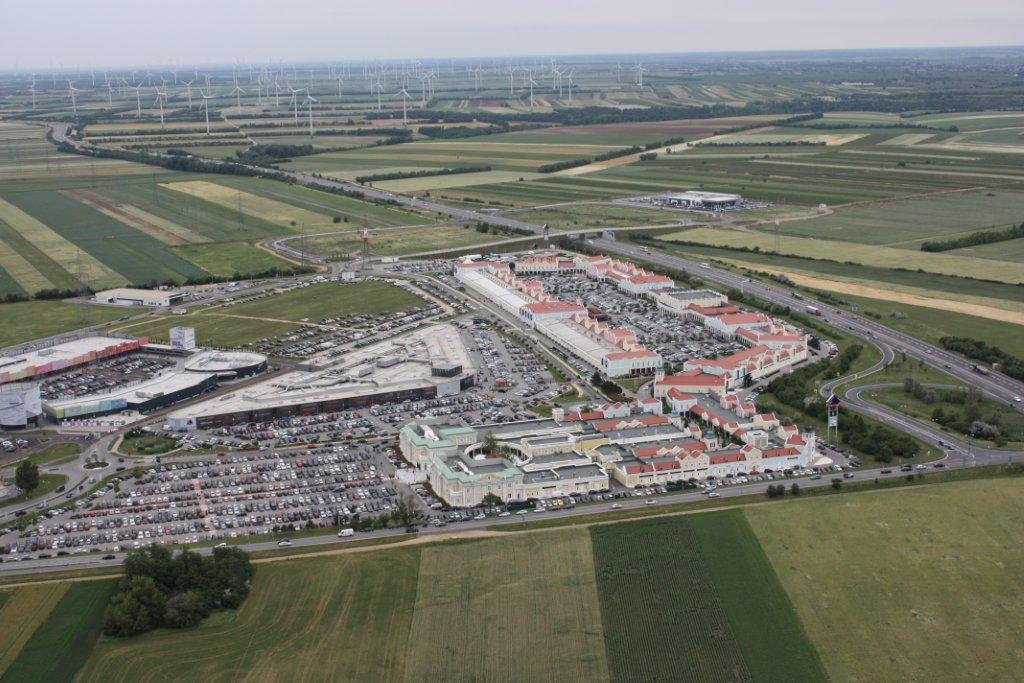
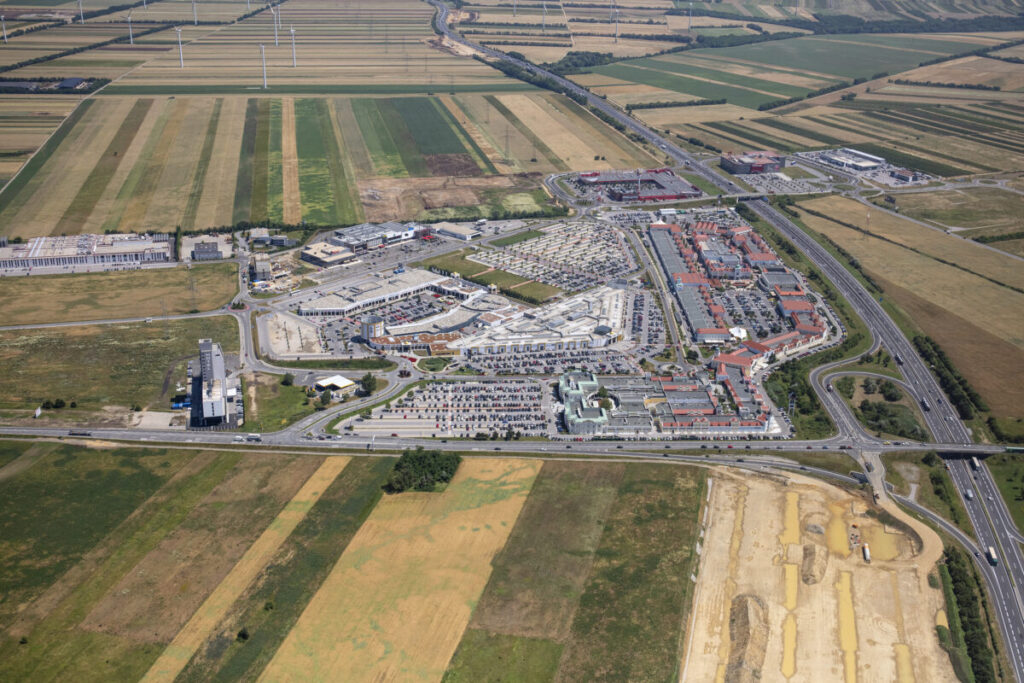
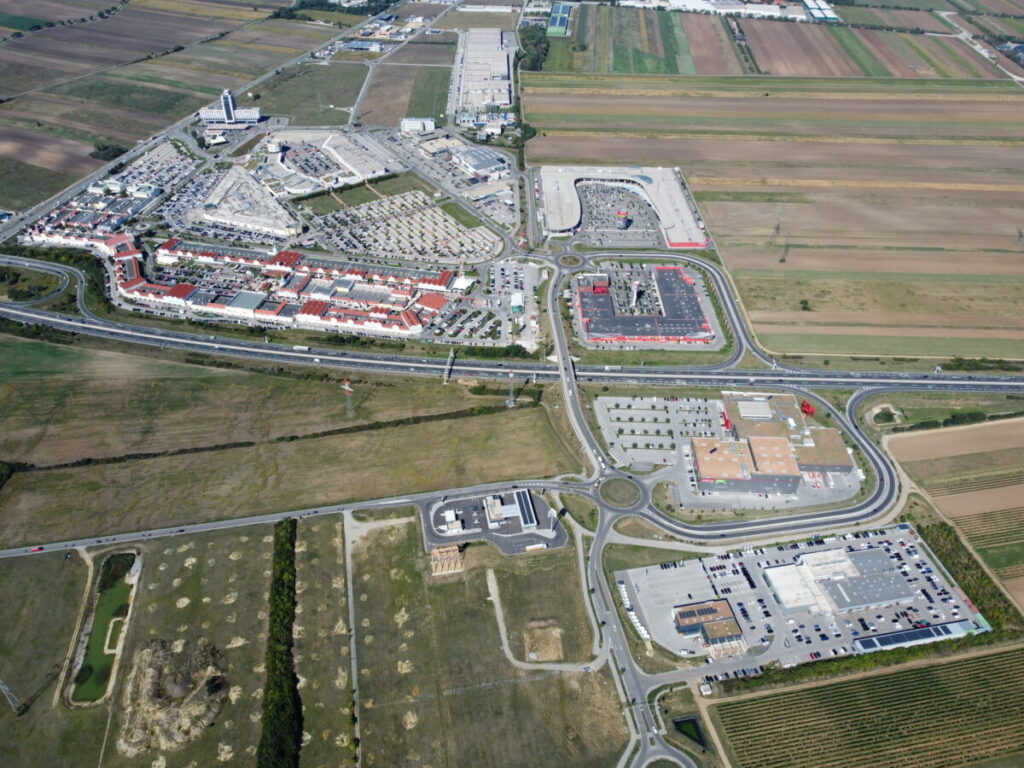
ACROSS: What are the critical factors for this successful development?
Schwann: There was a very clear vision. Specifically, the vision of a US developer, McArthurGlen, to invest in the small country of Austria. And they did this with the explicit goal of also targeting Eastern European countries, especially nearby Hungary and Slovakia. This decision was courageous in 1998, but it guarantees our success today as a retail and tourism hotspot. From the outset, the Parndorf location was conceived as an alternative for the more local population to downtown Vienna and shopping centers and as a European tourist destination. Accordingly, McArthurGlen also prioritized the development of the international brand mix from the beginning. The pioneers who entered then often came from the sports sector, such as Nike or Adidas. This was ideal for introducing customers to the concept of the outlet.
ACROSS: How difficult was it to explain the outlet concept to customers when you first opened compared to today?
Schwann: The outlet format was not known to customers at the beginning. That had to be communicated at first. Even today, communication is essential for us, similar to back then. It’s still very much about the brand mix and price reductions. For example, up to 70 percent price reductions for international designer brands are still today’s most crucial argument amid inflation.
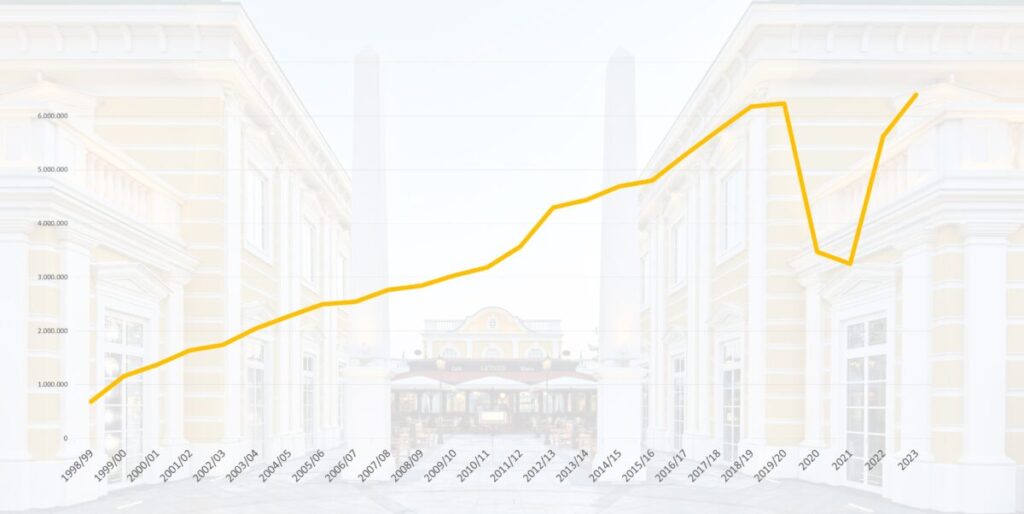
ACROSS: What were the most important developments regarding brand mix and collaboration with retailers?
Schwann: Around 2011, with the start of the fourth construction phase, we saw that we could convince brand partners, especially in the luxury segment, to come to Austria and open a location in Parndorf in addition to Vienna. So today, we have the biggest Karl Lagerfeld store in Europe and other luxury brands like Armani or Versace. Business with beauty brands such as L’Oréal or Rituals is developing very well. Today, we have brand partners from all categories at the forefront of sales development. This is precisely what characterizes the success of a good location. The exciting thing is that market entries today happen increasingly via the outlet sector. This is only due to the excellent performance of the outlet. The outlet scene generally maintains a very collegial relationship with its brand partners. McArthurGlen has a retail department for this purpose. This contributes significantly to the fact that the brand partners feel well-understood. As operators, we create a win-win situation. This distinguishes us considerably from the full-price sector, and this collegial approach has proven itself, particularly during the pandemic.
ACROSS: What criteria do you use to select your brand partners?
Schwann: We are fully leased. That’s a luxury problem that many shopping centers wish they had. But, of course, there is a certain level of fluctuation. Contracts expire from time to time. There is also a certain average turnover level that we have. We bring brand partners forward in terms of performance. However, some brands find that they are not a good fit for our location. We want to be attractive to each of our partners and are actively looking for great brands. So, we will now open our group’s first Red Bull Alpha Tauri store. Likewise, recently opened a Le Burger restaurant, a successful burger concept from Austria. We also have a list of brands we would like to see at our location. But you should never be arrogant and say this brand is not a good fit for us. After all, it is also our job to give brands opportunities to try out the outlet segment. That is undoubtedly a bit of test-and-learn, but we want to stand for that.
Impressions from the Outlet Center
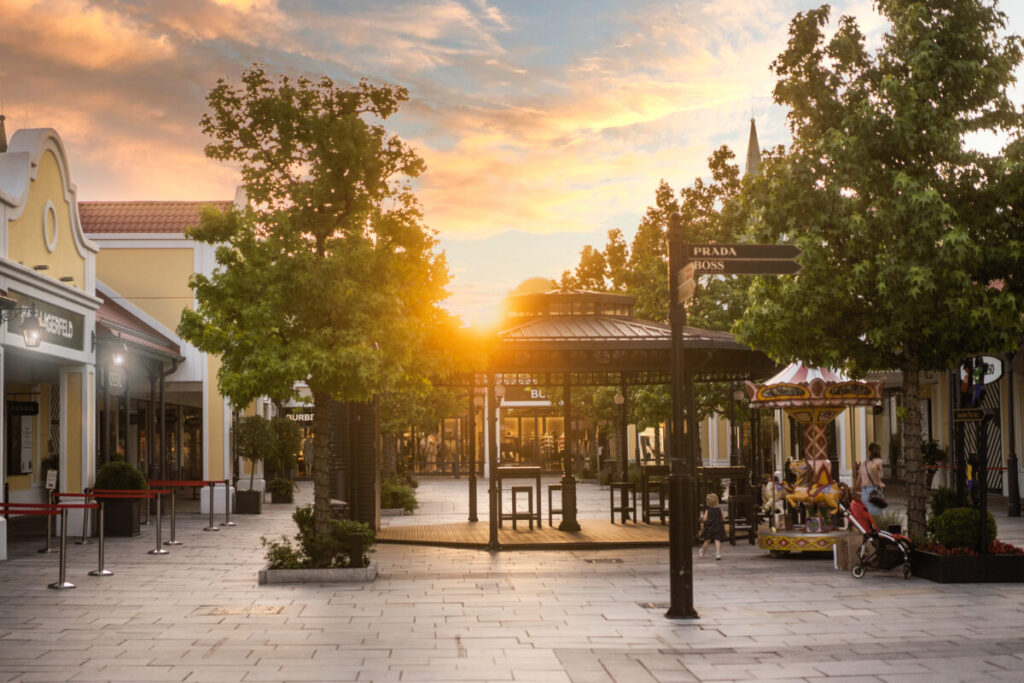
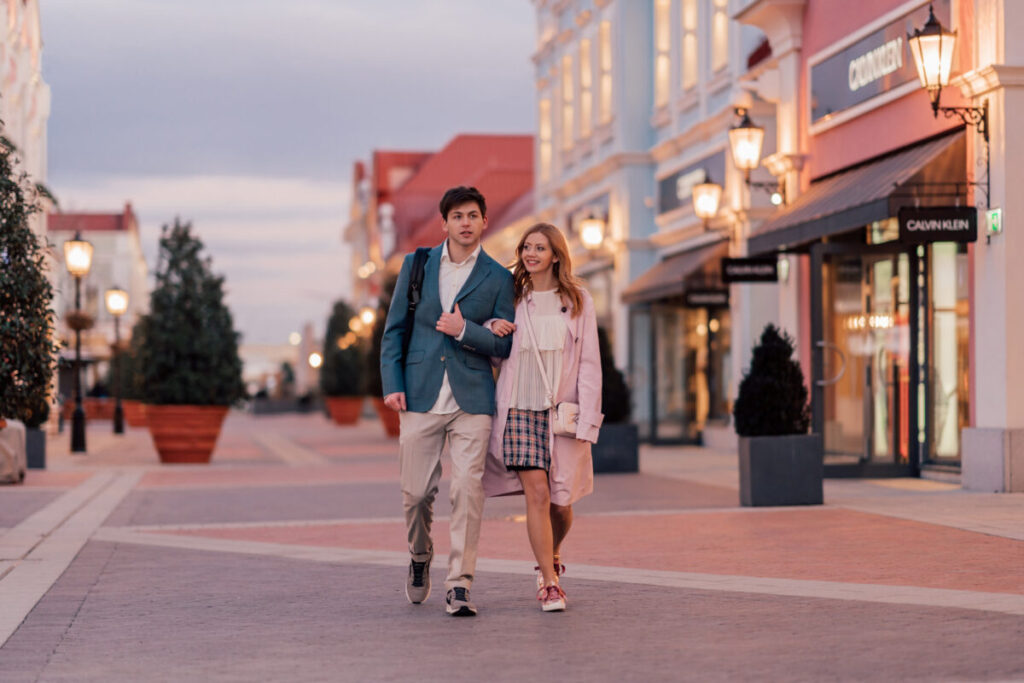
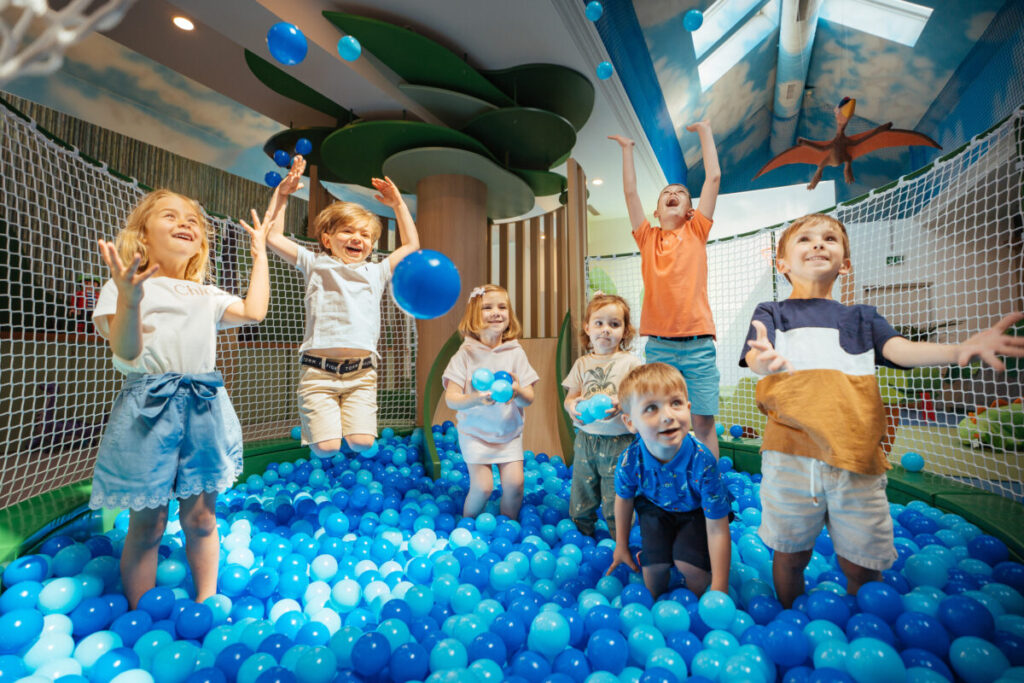
ACROSS: Where does the Parndorf site stand in McArthurGlen’s ranking?
Schwann: McArthurGlen currently has 25 locations in eight countries and is the operator, developer, and owner of these locations. Parndorf is one of the locations with the most robust international tourist flows, together with locations such as Serravalle and Noventa di Piave in Italy or Roermond in Holland, making it one of the top performers. 2019—just before the pandemic—was not only our best business year to date, but it also showed the importance of the location as an international tourism destination. At the time, 26% of our revenue came from visitors from non-EU countries, primarily South Korea, China, and Southeast Asian countries. Due to the currently limited travel activity, especially among the Chinese, we are not back to this level yet. However, we expect to see a positive development again soon. We have long been in talks with international tour operators again so that we will be on their travel route when things get going once more. However, our general visitor numbers have long since recovered, and this year we are currently eight percent ahead of 2019 sales.
ACROSS: The outlet scene has recovered comparatively quickly from the pandemic. What measures have you taken in Parndorf?
Schwann: Our focus on different customer groups has paid off in full. Even if financially strong international customers could no longer come to us, we could compensate for this very well with national tourists and guests from neighboring countries. Intra-European tourism has developed very well. We now see many guests from the Czech Republic, Romania, and the Benelux countries, where Parndorf is one stop on a more extensive round trip with an overnight stay in our neighboring hotel. Immediately after the pandemic, the outdoors was a crucial area for us. Like other centers, we quickly ensured a sense of security and compliance with all regulations. Close cooperation with the brands and tenants was essential. Together, we carried out many promotions and intensified social media activities. We have renewed 12,000 sq m of space with attractive brands or converted stores from brand partners since the start of the pandemic. We have actively moved forward regarding expansion and communication during this time, and our tenants have followed these steps. For example, there are now brand partners who advertise with us. That would have been unthinkable in the past.
ACROSS: How important is tourism in general for your location?
Schwann: Tourism is a significant factor for our success. International tourism, in particular, plays an important role here. But a substantial lesson from the pandemic is, as I said, that we have become a real fixture in eastern Austria for national and European tourists. People know us; they know what they are getting. Shopping and tourism belong together for us. Most recently, we opened the store “my burgenland”, which stands for exactly that and offers exclusively local products from our province. We are part of the region and want to bring the region to the center, to bring it closer to an audience of millions. The new myburgenland store features 150 producers and over 500 products from the Burgenland province. We have become a real tourist destination. We attract over six million visitors. Just for comparison, the Schönbrunn Zoo in Vienna has around two million visitors a year.
ACROSS: A lot has changed in your surroundings. For example, outlets have opened in other nearby border regions. Many forms of retail, including aftermarket outlets, have sprung up in your immediate neighborhood. Do you see any of these as your competitors?
Schwann: Generally speaking, every form of retail is a competitor for the budget consumers have available for spending. As far as the outlets you mentioned are concerned, however, they are not so much our competitors due to our size and brand mix. Our competition is the full-price segment and thus the large shopping centers in and near Vienna. However, the general development of the Parndorf retail location, including the diverse forms of retailing around our outlet, is gaining a more distinctive profile. For example, we cannot offer local supplies and daily goods to our customers ourselves. Therefore, it is only an advantage if regional customers from Burgenland or Lower Austria can still take care of everything simultaneously at the Parndorf location. The same applies to the entertainment and hotel industry. I see this as a strong location driver.
ACROSS: Parndorf is clearly a location where most customers arrive by car. Are there any plans to improve infrastructure connections?
Schwann: Since the end of last year, we have had a connection to the public transport network for the first time with an E-bus. This means the Parndorf train station is directly connected to the center and the business park. This opens up new opportunities for us to bring international guests to the outlet, especially from Vienna. This connection has become a highly frequented line in Burgenland in a very short time. There were also previous collaborations with bus companies to get to the outlet from Vienna, Budapest, and Bratislava by shuttle bus. But it is a fact that a substantial proportion of customers come to us by car. In line with the current development, we also have charging stations for e-cars.
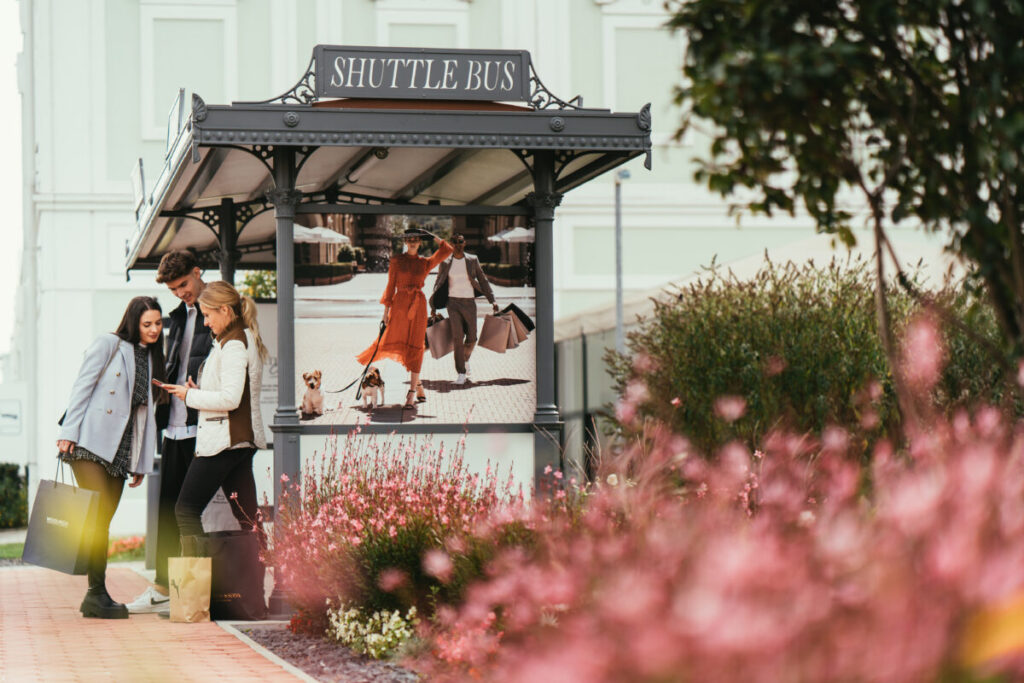
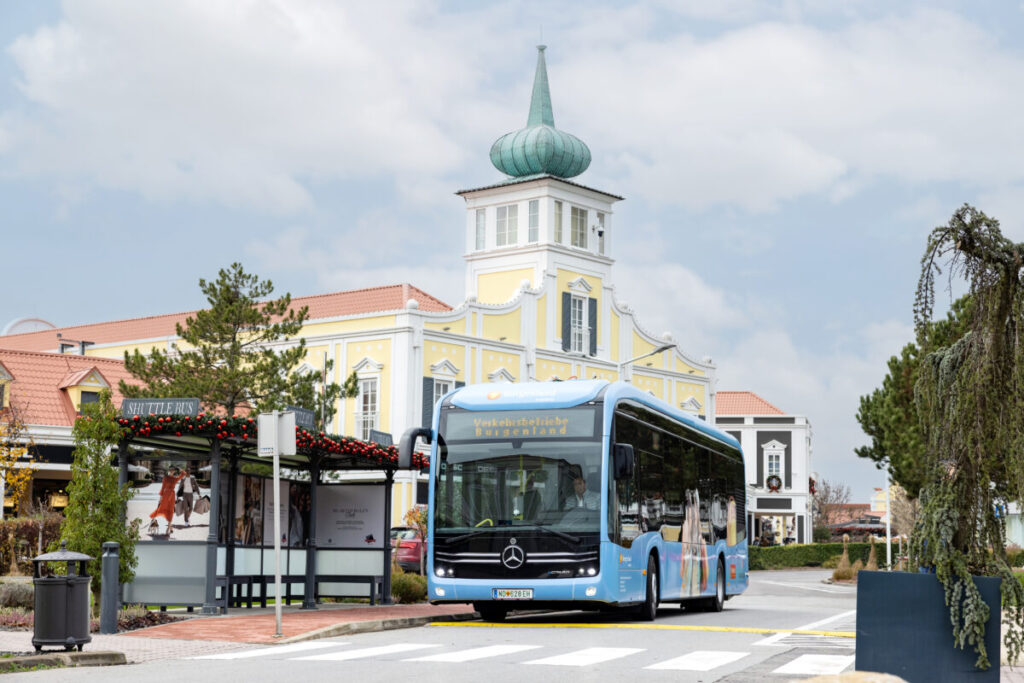
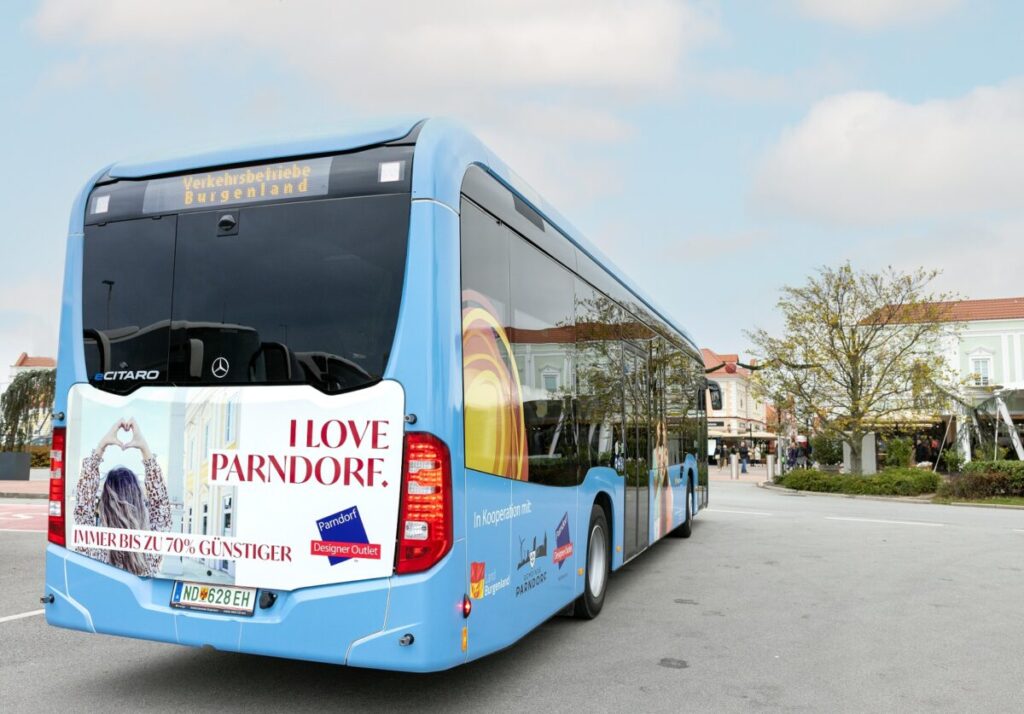
ACROSS: Parndorf originally started with a modest range of restaurants and cafés. How important is gastronomy today?
Schwann: Good gastronomy has much to do with how long customers stay. We are seeing growth in this area in particular. Quality is also a decisive factor. A lot has changed in this area. The restaurateurs have become more professional, especially in their cooperation with McArthurGlen. We now have an employee in center management who focuses exclusively on developing the food and beverage area, which has positively influenced the food trucks. This was more of an experiment at the beginning. Food trucks have definitely gone from a temporary theme to long-term institutions. This summer, we have five operators again, placed in an area where the landscaping fits and where the entertainment program also takes place with music and a summer stage. Food trucks perfectly complement the catering offer as a faster alternative. But again, the quality has to be right. In total, we have about 2,000 sq m of catering space, and we continue to optimize this space so that the ambiance is right and in line with the product quality. Terraces and seating options are particularly important in this regard.
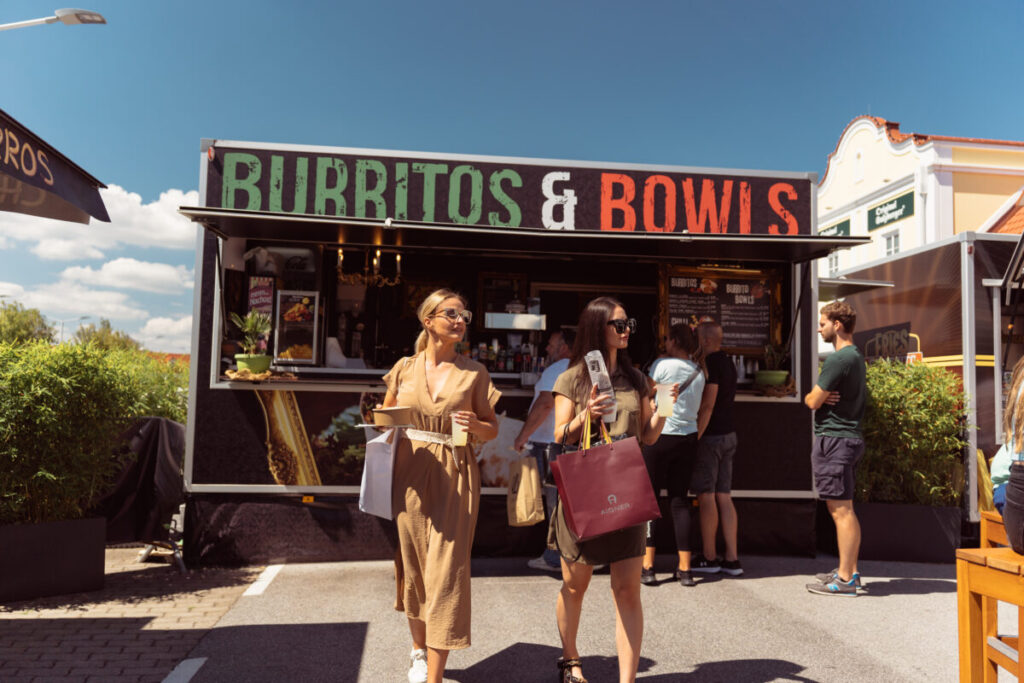
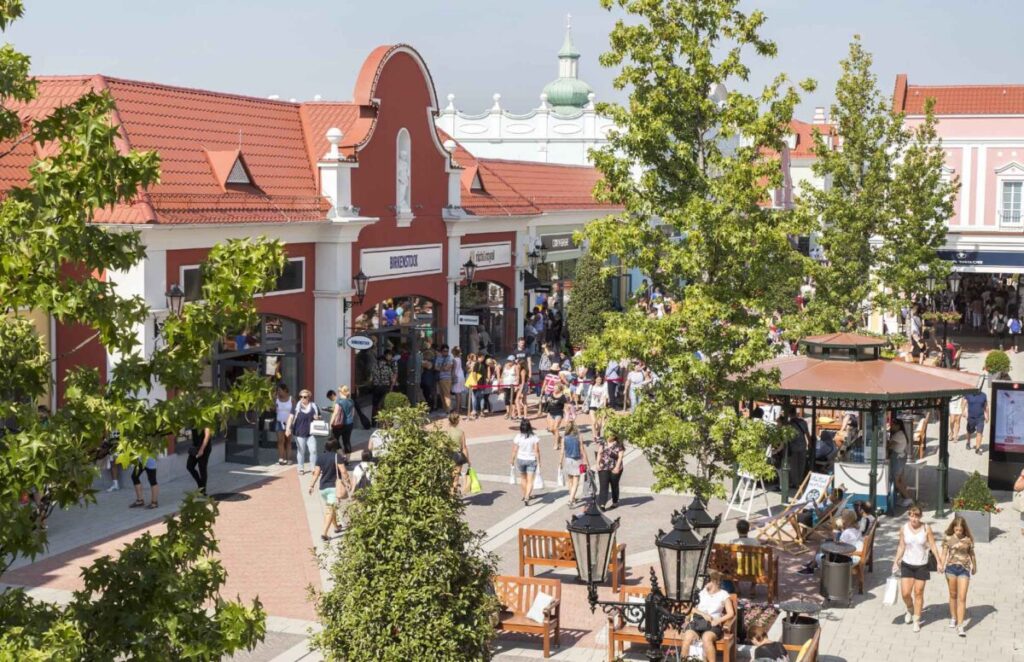
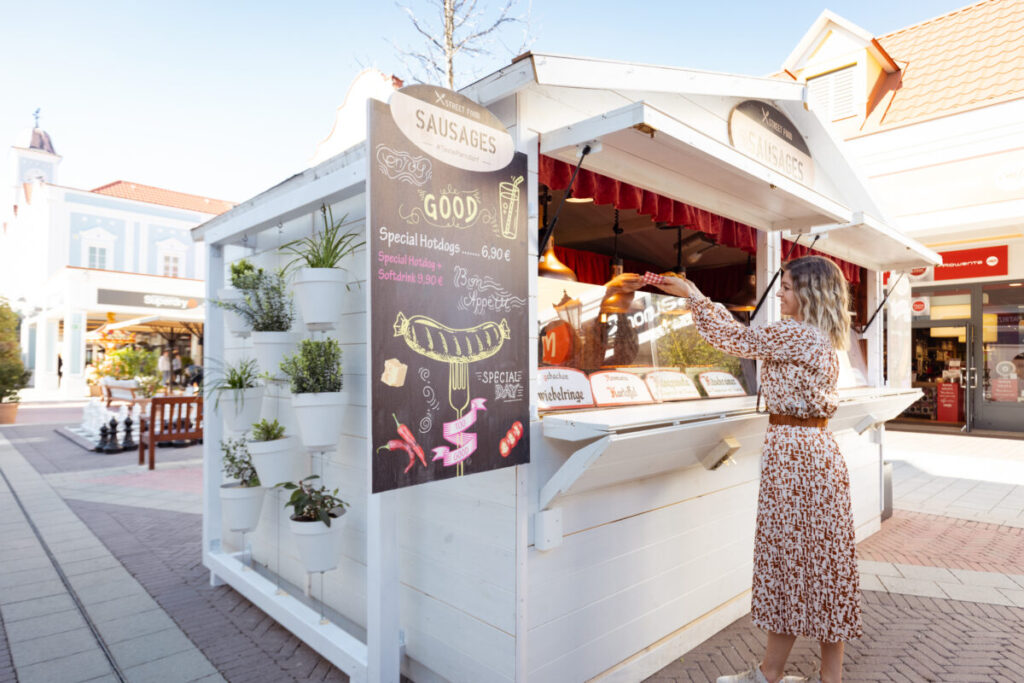
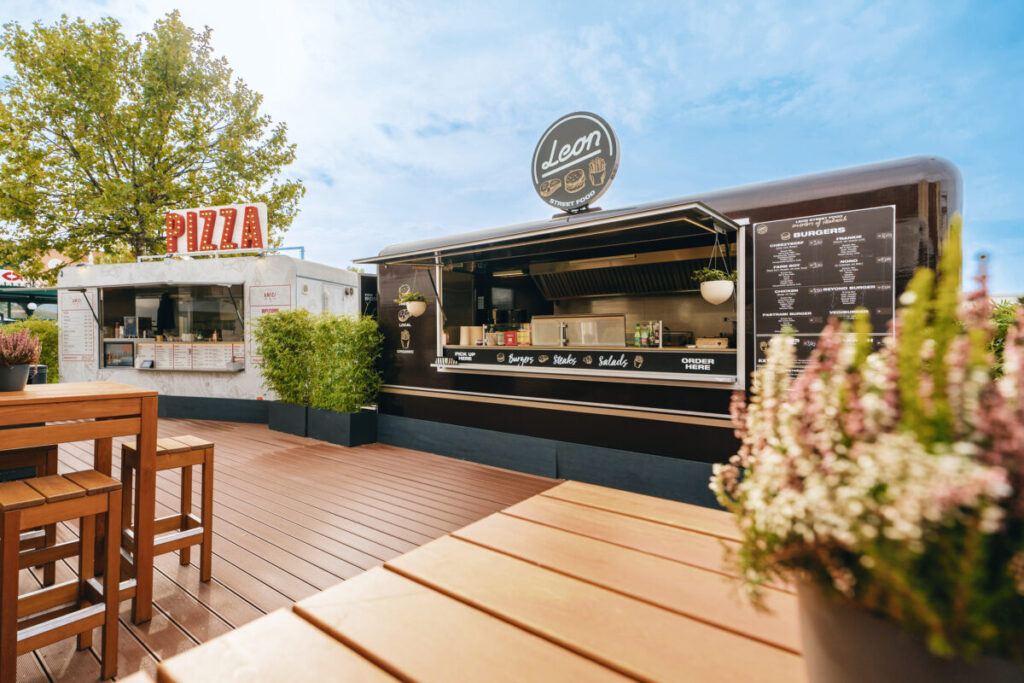
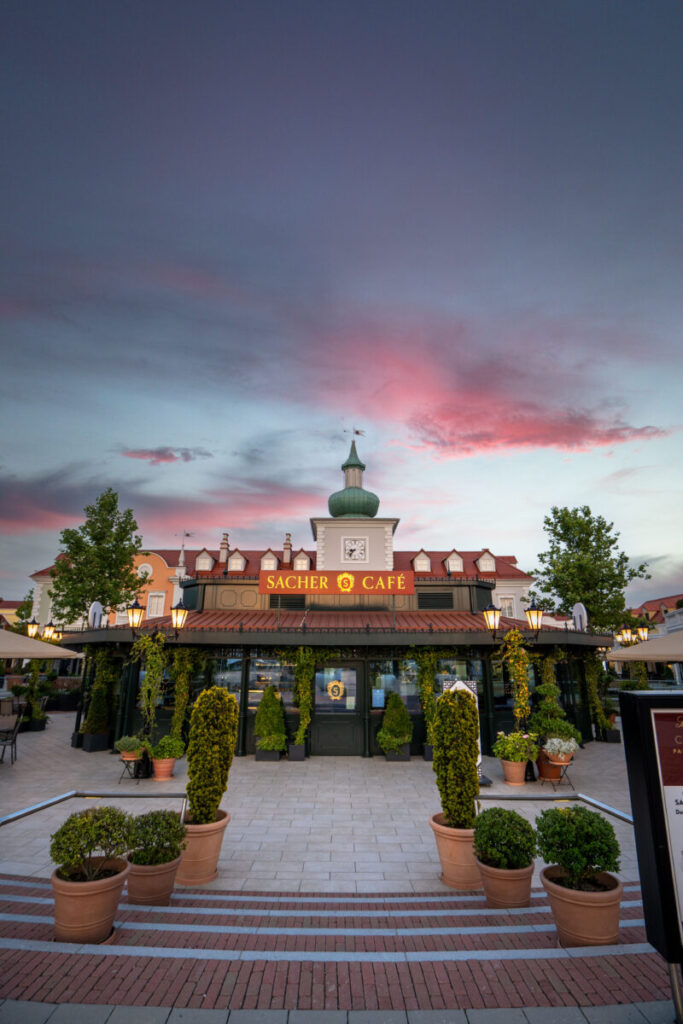
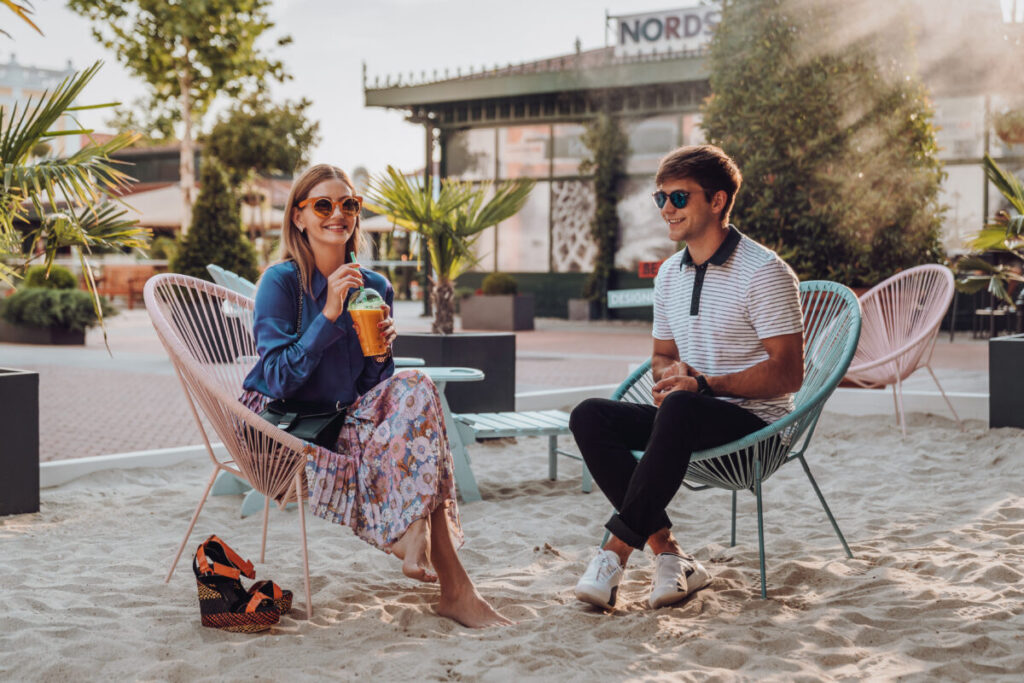
ACROSS: The retail sector is plagued by an enormous shortage of employees. How much is the Parndorf outlet affected by this situation?
Schwann: Unlike most retail locations, we do not have an employee problem. This is also due to our geographical location. The proximity to the border is a huge advantage. In addition to Austrian employees, we have many colleagues from Slovakia and Hungary. They are naturally attracted not only by a better salary than in their home countries but also by the attractive brand mix and the opportunity to work for a wide range of international brand partners and build a career. Our international staff has the advantage that we can address a large part of the customer base in their native languages and offer appropriate service.
ACROSS: Are there any further expansion plans, and where do you see this location in ten years?
Schwann: There are no expansion plans at the moment. We are optimizing our location further, as we have done in the last three years. In the future, I see Austria as a location that will continue developing toward international tourism. For us, this could mean new brand partners, especially from the luxury segment, and we could attract brands not previously active in the outlet sector. Entertainment will undoubtedly become even more interesting. I see much development in the entire retail industry. And the topic of opening hours, particularly Sunday opening hours, will also remain exciting in a country like Austria, especially in a retail location close to the border. In any case, if we continue our optimization course and maintain good cooperation with our partners, we will certainly continue the Parndorf success story over the next ten years.

